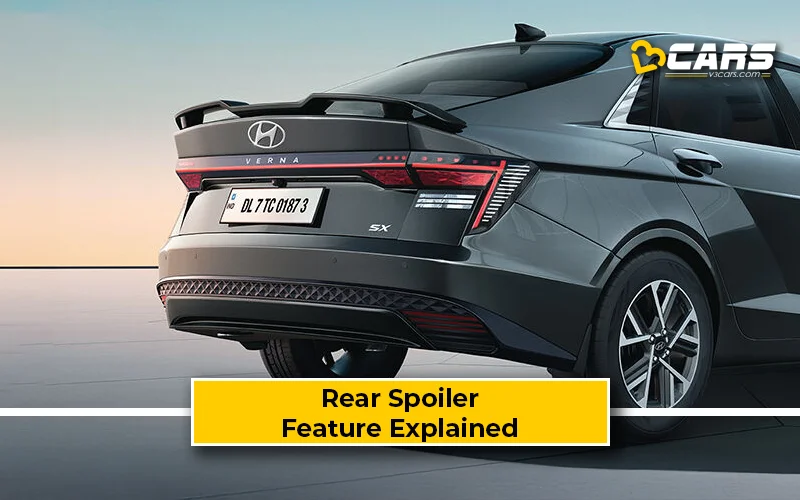Rear Spoiler – Feature Explained
A rear spoiler is a prominent aerodynamic device mounted on the rear of a vehicle. It’s designed to alter airflow over the car’s body, serving both functional and aesthetic purposes. Let’s delve into the details.

What Is A Rear Spoiler?
A rear spoiler is an automotive body part attached to the boot lid or roofline of a car. Its primary function is to “spoil” the airflow, reducing lift and improving stability, particularly at high speeds.
How Do Rear Spoilers Work?
As a car moves, air flows over its body, and this airflow can create lift, which reduces traction. A spoiler disrupts this airflow, redirecting it to create downward pressure or “downforce.” This downforce helps keep the car planted on the road, enhancing handling and control.
What Are The Benefits Of A Rear Spoiler?
- Improved aerodynamics: By managing airflow, spoilers can reduce drag (resistance) and lift, improving the car’s overall aerodynamic efficiency.
- Enhanced stability: Spoilers increase downforce, which improves stability, especially at high speeds and during cornering.
- Increased traction: The added downforce helps the tyres maintain better contact with the road, improving traction and handling.
- Sporty appearance: Many car enthusiasts appreciate the sporty and aggressive look that a rear spoiler adds to a vehicle.
Note: Most rear spoilers in mass-market cars sold in India do not offer any functional benefits such as reduced drag, increased downforce, etc. They are there mostly for styling and aesthetic purposes only.
What Are The Potential Drawbacks Of A Rear Spoiler?
- Reduced fuel efficiency (in some cases): While a functional spoiler can improve efficiency at high speeds, some poorly designed or overly large spoilers can increase drag at lower speeds, slightly reducing mileage.
- Added weight: Spoilers add a small amount of weight to the vehicle.
- Cost: Spoilers can range in price from relatively inexpensive to quite costly, depending on the materials, design, and quality.
What Are The Different Types Of Rear Spoilers?
- Lip spoiler: A subtle, low-profile spoiler that mounts to the edge of the boot lid.
- Wing spoiler: A larger, more pronounced spoiler that sits higher and is designed to generate significant downforce.
- Pedestal spoiler: A spoiler mounted on pedestals, raising it higher into the airflow.
- Roof Spoiler: Attached to the top of the rear windshield, common on hatchbacks and SUVs.
Functional vs. Aesthetic Rear Spoilers
It’s important to distinguish between spoilers that enhance performance and those that are primarily for looks:
- Functional Rear Spoilers: These are designed and engineered to provide a specific aerodynamic benefit. They are typically found on sports cars, high-performance vehicles, and race cars. Functional spoilers are shaped and positioned to manipulate airflow to reduce lift, increase downforce, and improve stability at higher speeds.
- Aesthetic Rear Spoilers: These spoilers are primarily for visual enhancement. They may offer minimal to no aerodynamic benefit. Often, they are smaller, have a less aggressive design, and are installed on vehicles where high-speed performance is not the primary concern. While they might slightly alter airflow, their main purpose is to give the car a sportier or more stylish appearance.
In essence, functional spoilers are about improving how a car drives, while aesthetic spoilers are about improving how it looks.
Also Read: Top EVs In India With Over 500km Range
Helpful Tools:
- Fuel Cost Calculator for Cars – Know your monthly fuel expense based on usage and mileage
- Car On-Road Price Calculator – Convert ex-showroom to on-road price for any city
Sell Used Car Online – Enter your car and contact details to get an instant price estimate and book a free inspection with our partner network


0 Comments